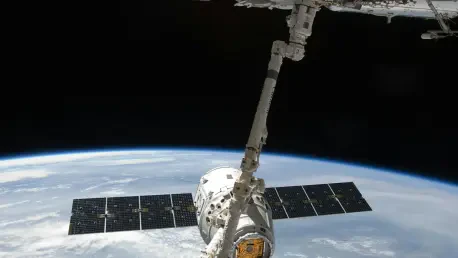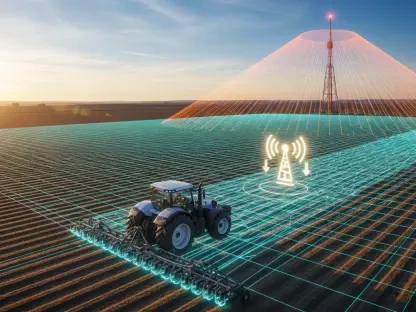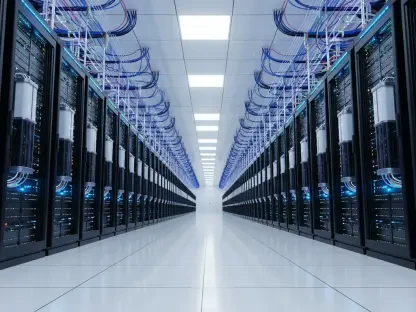In a world increasingly reliant on technology to address complex challenges, Pakistan has taken a significant leap forward with the launch of a cutting-edge satellite designed to transform critical sectors of national importance. This high-tech remote sensing satellite, now fully operational and communicating with ground stations, promises to deliver high-resolution imagery that will revolutionize decision-making processes across diverse fields. From bolstering agricultural productivity to enhancing disaster response mechanisms, this satellite marks a pivotal moment in the nation’s journey toward technological self-reliance. Its capabilities extend beyond mere data collection, offering actionable insights for urban planning, environmental monitoring, and strategic infrastructure projects. As natural disasters and climate change continue to pose severe threats to the region, the timely availability of real-time data could be a game-changer for millions. This advancement signals not just progress in space technology, but a broader commitment to sustainable development and resilience.
1. A Milestone in Space Technology
Pakistan’s space program has reached new heights with the successful deployment of this advanced satellite, which joins an expanding fleet of orbital assets dedicated to national progress. Equipped with state-of-the-art imaging technology, the satellite is already transmitting detailed visuals that provide a clearer picture of the country’s diverse landscapes and urban centers. This achievement builds on earlier successes, such as the long-operational Pakistan Remote Sensing Satellite-1, and reflects a growing emphasis on domestic innovation. The recent launch of a fully indigenous electro-optical Earth observation satellite by local engineers further underscores this trend toward self-sufficiency. Such developments highlight the nation’s determination to reduce reliance on foreign technology while fostering expertise within its borders. The implications of these advancements are far-reaching, promising to enhance not only scientific research but also practical applications in everyday governance and resource management.
The collaborative spirit of Pakistan’s space endeavors also shines through in partnerships with academic institutions, both domestic and international, to push the boundaries of research and innovation. These joint efforts have resulted in additional satellite launches that prioritize educational and scientific objectives, providing valuable data for students and researchers alike. Beyond academic contributions, the newest satellite’s capabilities are poised to address pressing national needs with unprecedented precision. Its ability to monitor intricate details of terrain and infrastructure will support smarter decision-making in areas often hampered by outdated information. This technological leap is not merely a symbol of progress but a practical tool that can reshape how challenges are tackled, from rural development to urban sprawl. As the space program continues to evolve, it sets a foundation for future projects that could further elevate Pakistan’s standing in the global arena of space exploration and application.
2. Transforming Disaster Response and Environmental Monitoring
One of the most critical roles of the newly launched satellite lies in its potential to strengthen disaster management across a country frequently affected by natural calamities like floods, earthquakes, and landslides. By providing real-time data, the satellite enhances early warning systems, enabling authorities to act swiftly and mitigate the impact on vulnerable communities. This capability is especially vital in a region where timely information can mean the difference between life and death during catastrophic events. The high-resolution imagery also aids in post-disaster assessments, allowing for more efficient allocation of resources and coordination of relief efforts. Such advancements signify a shift toward proactive rather than reactive strategies, ensuring that the nation is better prepared to face unpredictable challenges posed by nature.
Equally significant is the satellite’s contribution to environmental monitoring, particularly in tracking issues like glacier melt, deforestation, and the broader effects of climate change. These concerns are paramount in a region deeply impacted by global warming, where melting glaciers threaten water supplies and deforestation exacerbates ecological imbalances. The satellite’s data offers scientists and policymakers a powerful tool to study long-term trends and devise sustainable solutions. Additionally, its role in precision agriculture cannot be overstated, as it helps map crop cycles and optimize irrigation practices, directly addressing food security in a resource-stressed environment. By integrating environmental data into national planning, this technology fosters a more informed approach to conservation and resource management, paving the way for policies that balance development with ecological preservation.
3. Driving Development and Strategic Initiatives
The satellite’s advanced imaging capabilities are set to play a pivotal role in urban development and infrastructure planning, providing detailed insights into urban sprawl and growth patterns. This data is invaluable for creating smarter, more sustainable cities, especially in a country experiencing rapid population increases and urbanization. Planners can use the information to identify areas in need of infrastructure upgrades or to strategize regional development with greater accuracy. Such tools are essential for ensuring that growth is managed in a way that benefits all citizens while minimizing strain on existing resources. The ability to monitor these changes in near real-time offers a level of oversight previously unattainable, potentially transforming how urban challenges are addressed.
Beyond urban planning, the satellite supports strategic national initiatives, including major projects like the China-Pakistan Economic Corridor. By aiding in infrastructure development, resource allocation, and geohazard risk management, it ensures that such large-scale endeavors are executed with precision and foresight. The technology’s contributions enhance decision-making at a national level, promoting sustainable socio-economic progress and strengthening technological autonomy. These efforts reflect a broader vision of integrating cutting-edge tools into governance and development frameworks. As a result, the nation stands to gain not only in terms of immediate project outcomes but also in building a resilient foundation for future growth. This strategic use of space technology underscores a commitment to leveraging innovation for the greater good.
4. Reflecting on a Technological Triumph
Looking back, the successful launch and operation of this satellite marked a defining moment in Pakistan’s pursuit of technological advancement. Its integration into the national framework demonstrated a remarkable synergy between innovation and practical application, addressing some of the most pressing challenges faced by the country. The high-resolution data it provided proved instrumental in reshaping disaster response, environmental monitoring, and urban planning. This achievement also highlighted the value of homegrown expertise and international collaboration in overcoming barriers to progress. Reflecting on these milestones, it became evident that such endeavors were not just about reaching the stars but about grounding solutions in real-world impact. Moving forward, the focus should remain on expanding these capabilities, investing in further research, and ensuring that the benefits of space technology reach every corner of society. Exploring additional applications and fostering public-private partnerships could amplify the positive outcomes, setting a precedent for other nations to follow.









